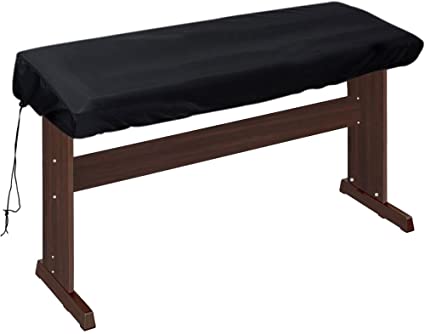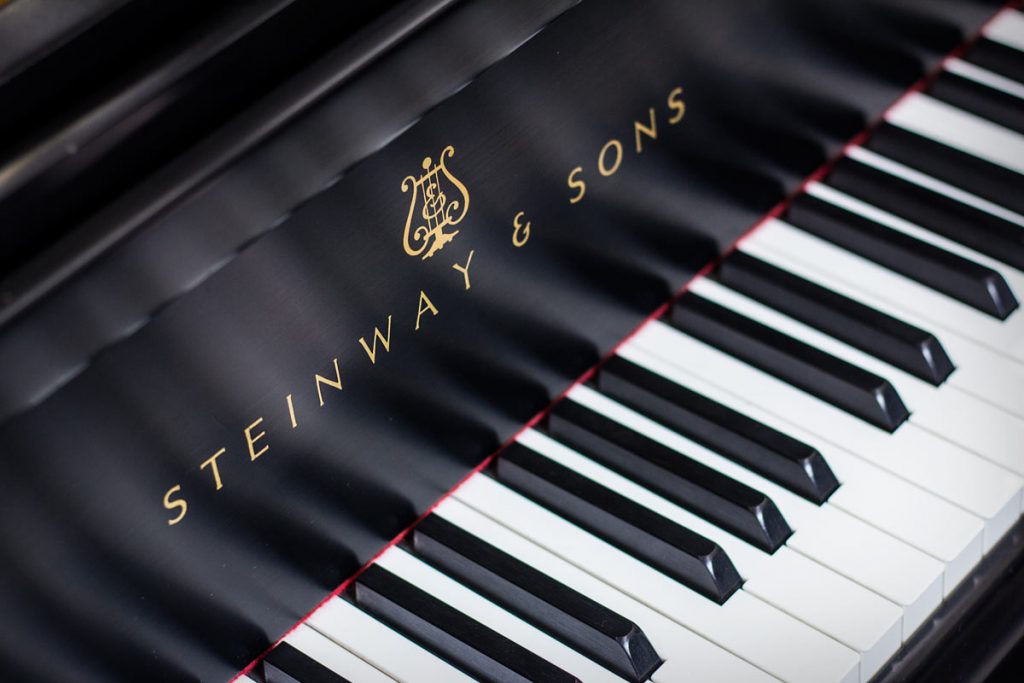Here comes an important duty – knowing how to clean a digital piano. Essential elements in a digital piano are its keys. Both the black and white piano keys bring forth the charm of this musical instrument. Cleaning it, however, depends on its frequency of use.
Therefore, it is highly expected for a teaching institution that uses pianos to clean them regularly. This can be narrowed down to collecting fingerprints and maintaining the machine for future use.
However, if you don’t use the piano that often, then you won’t need to clean it often. So, the frequency of usage determines the frequency of cleaning.
However, this doesn’t mean you neglect your piano if you don’t use it that much. There are ways intended to maintain and ensure the keyboard always looks good any time you want to use it.
Check out the tips on how to clean a digital piano.
Before we get into it, you can use a cheap piano cleaner instead of other chemicals.
How to Clean Digital Piano Contacts
Contacts are fully required to enable note command. Whenever a key is struck, it is responsible for registering its purpose to the PC. In other words, contacts can be termed as the key sensors. At times these contacts are affected by debris, which negatively alters their functionality.
When this happens, a piano player will find it difficult for the keyboard to register specific keynotes. Contacts cleaning may require professional help, but it is also not impossible to undertake the task on your own. With the right steps and tools, your contact keys will be good to go.
To clean the contacts, you will need to unscrew the piano to fetch the keyboard. After that, you need a cleaning solution and some cotton swabs.
The cleaning solution should at least have an alcohol content of about 91%. You can easily acquire these things from the store. Note that they are mandatory to help you clean the piano effectively.
Here are the steps:
- Damp a cotton swab in the solution and gently wipe the black circuit contacts.
- Do the same on the black button contacts located on the underside of the rubber strips.
- Brush off any remaining debris gently, but make sure not to scrub off the rubber contacts as they are much vulnerable to tear.
- Once finished, you may reinstall your contacts on to your PC. This procedure has to be done with special attention. Make sure to install the rubber strips in the same manner you found them.
How to Clean Sticky Digital Piano Keys

Keys get stuck due to various reasons. Some of them include percolated dust within the cracks and swelling, which is mostly the case with wooden keys. There are different ways to unstick your piano keys.
But, this will depend on the material from which they are made. For percolated dust within the cracks of the keys, you only require an easy procedure to get your keys unstuck.
Just have with you a soft cloth, a bowl with some warm water and mix with 1-2 drops of liquid soap. Slightly damp one end of the cloth inside the solution and softly wipe between the cracks. Use the other dry end of the cloth to eliminate any remaining moisture after cleaning.
If perhaps the keys of the piano are made up of wooden material, it is likely enough that they are getting stuck as a result of swelling. Swelling happens when wooden keys are exposed to humid climates or receive spills.
Avoid taking any drinks around your piano. For humidity, a dehumidifier is an excellent device to keep next to such wooden key pianos.
You may also need to unscrew your board and fix the sticky issue. However, if you find it deeply complicated, it is highly recommended that you seek professional help.
ALSO READ: How to Fix a Digital Piano – Best Tips and Advice
How to Disinfect Your Digital Piano Properly

Disinfecting your piano keys is crucial. This is highly recommended during the cold and flu seasons. If two or more people use the piano, you need to clean it regularly. As pointed out earlier, before cleaning a piano first get to know what materials the keys are made from.
This will go a long way to ensure that there is safety for the keys. Avoid using chemical solutions as they may damage the keys.
Use a light vinegar solution mixed with warm water. Damp a soft cloth (lint-free) and wipe the keys towards you. Don’t use a lot of liquid as it may find its way between the sides of the keys.
This method helps to remove any stains or fingerprints on the keys and maintain an infection-free keyboard. The reason we don’t recommend the use of popular spray disinfectants is that they mess up the texture of the keys.
The use of white vinegar mixed with warm water will get your piano keys clean from infections. For ivory keys, we advise you do this only occasionally.
How to Clean an Electric Piano Keyboard
Electric piano keyboards are mostly affected by moisture. When cleaning the electric piano keyboard, the procedure followed is similar to other digital pianos.
First, you need a cleaning solution. Mix a few drops of dishwashing liquid with a bit of warm water in a small container.
Start by cleaning the white keys. Use a clean, soft, dye-free cloth and damp it slightly in the solution. Gently rub on the keys individually for better results.
Using a different dry but soft cloth, rub it gently again on the white keys for drying. For the black keys, take another clean and soft cloth. Dip it in the solution but ensure that it is only slightly wet. It should not be full of moisture as this could find its way in between the sides.
Clean the black keys one by one and also don’t forget to clean the sides. Follow the same steps for drying the black keys. You may also find a cleaning spray for your keys, and it would work just as fine.
Why a Dust Cover is Important After Cleaning

Not only does a dust cover protect the piano from dust or scratches, it also helps to reduce the aging process of your piano. You see, exposing your digital piano directly or even indirectly to the sun can cause serious damage in the long term.
The sun eats up the finishing, which results in discoloration of your piano. Another thing is that the weather changes at night may adversely affect your piano. Temperature and humidity changes can alter the appearance of the piano if it is not covered.
Although it may be tiring to covering and uncover the piano if you use it regularly, in the long-term a cover helps a lot. Using a dust cover plays a significant role in influencing anti-aging and maintains the cleanliness of your musical instrument. Therefore, it is essential to keep your piano covered when not in use and after cleaning.
FAQs
Are Clorox Wipes Safe on Piano Keys?
Yes, Clorox wipes are safe on piano keys. Since keys are the most important parts of your digital piano, using disinfecting wipes clean them is safe.
Why Do Piano Keys Turn Yellow?
It is impossible to prevent your piano keys from turning yellow. But, one way to consider is preventing direct sunlight from reaching your digital piano. Unfortunately, plastic piano keys turn yellow if you expose them to direct sunlight. Therefore, you need to keep your keys protected always by using a piano cover.
Can You Use Alcohol to Clean Piano Keys?
The answer is yes! You can use alcohol to clean your digital piano keys. All you need to do is apply a few alcohol drops on a soft, clean cloth, and then wipe the keys properly to remove stains. After you’re done cleaning, take a dry, soft cloth and wipe the keys again.
How Do You Clean an Old Piano?
Here are the steps on how to clean a digital piano that is old:
- Take a soft, cotton pad and dampen it in hydrogen peroxide
- Once dampened, use it to wipe the piano keys softly at the tops
- Use an alcohol-based disinfectant that is well diluted to clean the piano
- Avoid using bleach or products that contain citrus.
- In case you are using spray or a liquid bottle, ensure that you use soft cloths or disposable pads for cleaning.
Can You Clean Piano Strings?
Unfortunately, there isn’t a precise answer to this question since there’s no proven way to alleviate rust from your piano strings. However, we recommend using a vacuum cleaner that has a powerful reverse suction to help remove the dust from the strings.
How to Polish a Steinway Piano

To clean a Steinway piano, take a soft and dry piece of cloth and wipe the finishing of the piano properly to ensure all the dust and stubborn stains are removed. You can use a slightly moistened leather cloth to wipe the Steinway piano. Please note that you should avoid using furniture polish because it normally has waxes or even silicone in some cases.
How Do You Remove Scratches from a Black Piano?
To remove scratches from a black piano, consider trying a good piano polish such as Cory’s. Don’t try to remove the scratches with a rubbing compound.
How Long Does a Digital Piano Last?
A digital piano can last between 20 to 50 years, depending on how well you maintain it. Most high-end digital pianos are built better and have an excellent structure. Therefore, they tend to last longer and can serve you well for up to 50 years. Low-end pianos, on the other hand, don’t last long, but they can go up to 20 years if maintained properly.
Conclusion
Digital pianos are musical instruments capable of lasting for a long time. But for this to happen, it will require you to cater and care for it in the right manner fully. Cleaning the keys is an activity you have to love if you want to maintain the beauty of your piano.
Always strive to follow the right steps for proper and safe cleaning. There is also the manufacturer’s guide, and with the above-detailed procedures of cleaning, you should ensure that you’re doing the right thing. Always remember that before using the piano, first ascertain that your hands are moisture-free and clean.



